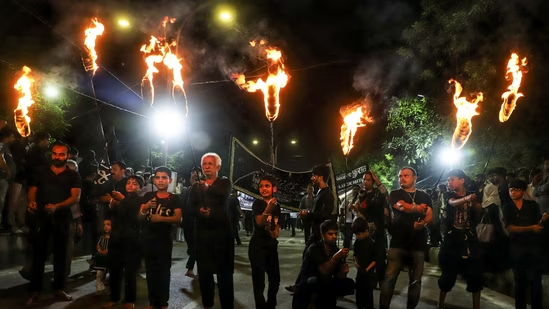
New Delhi, July 6, 2025 – Following traditional Moon‑sighting practices, India officially begins the sacred month of Muharram today. Observance of the solemn Day of Ashura—marking the 10th day—falls on Sunday, July 6, uniting communities in reflection, prayer, and remembrance. Here’s an in-depth look at the date, spiritual significance, and historical roots of the Islamic New Year.
Date Determination: July 6, 2025
According to India’s Ruyat‑e‑Hilal committees, the crescent was sighted on June 26, making June 27 the first of Muharram and placing Ashura on July 6. While some uncertainty lingered about observance possibly shifting to July 7, authorities confirmed that no such change is warranted—Ashura is firmly set on July 6 for all of India . This also means public institutions, banks, schools, and stock markets will remain closed today.
What Is Muharram and Why It Matters
Muharram is the first month of the Islamic lunar calendar and is one of the four sacred months during which warfare is forbidden . Its arrival signifies the Islamic New Year (1st Muharram), commemorating the Prophet Muhammad’s migration (Hijra) from Mecca to Medina in 622 CE. A period of reflection, multiple Muslim communities honor Muharram with prayers, Quranic recitations, charity, and fasting.
Ashura: Sign of Sacrifice and Hope
The 10th day—Ashura—holds layered meanings across Muslim traditions:
- For Sunnis, Ashura remembers Prophet Moses and the Israelite exodus from Pharaoh, observed through voluntary fasting—a practice rooted in tradition.
- For Shias, it is a profound day of mourning for Imam Hussain, grandson of Prophet Muhammad, killed at Karbala in 680 CE. The events at Karbala on 10 Muharram are central in Shia theology, underlining themes of justice, resistance, and sacrifice .
Rituals include processions, chest‑beating, heart‑rending poetry (marsiyas/nohas), Taziya (replica shrines), public sermons, and communal fasts. In cities like Lucknow, Hyderabad, Varanasi, and Amritsar, these commemorations draw large crowds. Municipal authorities manage traffic and safety—such as road diversions in Lucknow and CCTV/drones in Varanasi .
A Glimpse into History
- The Hijra in 622 CE inaugurated the Islamic calendar and reflected a foundational moment for the Muslim community, marking the start of Year 1 AH (Anno Hegirae).
- Imam Hussain’s stand in Karbala against Yazid I on the 10th Muharram symbolizes a timeless stand for justice—even in the face of martyrdom .
- The origin of fasting on Ashura dates back to the Prophet’s time in Medina. Though optional today, it carries immense spiritual value—Sunnis fast to express gratitude, while Shias fast in solidarity with Imam Hussain’s suffering .
How It’s Observed in India
Today, mosques nationwide will hold special prayers (namaz-e-Ashura). Families may fast, read from the Quran, donate food, and visit community mourning gatherings. Shia-led Taziya processions travel through city streets before burial in local cemeteries. Sunni observances focus on gratitude and fasting—often on both the 9th and 10th of Muharram .
Public life slows down: schools close, financial markets open later or pause, and government services remain limited . People from all communities are encouraged to show respect by avoiding loud festivities and respecting procession routes.
Contemporary Significance
Muharram today transcends sectarian lines—echoing universal values:
- Justice & Resistance: Imam Hussain’s sacrifice inspires modern struggles for rights and dignity.
- Reflection & Renewal: The Islamic New Year is a time for introspection and spiritual recharging.
- Social Cohesion: Public rituals unite communities, evidenced by cross-faith dialogue and respectful civic coordination.
Moving Forward
Muharram continues until July 25, with Ashura marking its peak. The week ahead includes ongoing prayer meetings, charitable acts, and processions. It’s also a time for families to teach younger generations the profound lessons of faith, compassion, and resilience embedded in Karbala and the foundations of Islam.
In conclusion, the observance of Muharram 2025, culminating in Ashura on July 6, unites millions in India and beyond in a timeless journey—rooted in history, yearning for justice, and aspiring for spiritual renewal. This day serves as a powerful reminder that even through sorrow, communities can find purpose and strength.
Thanks For Reading